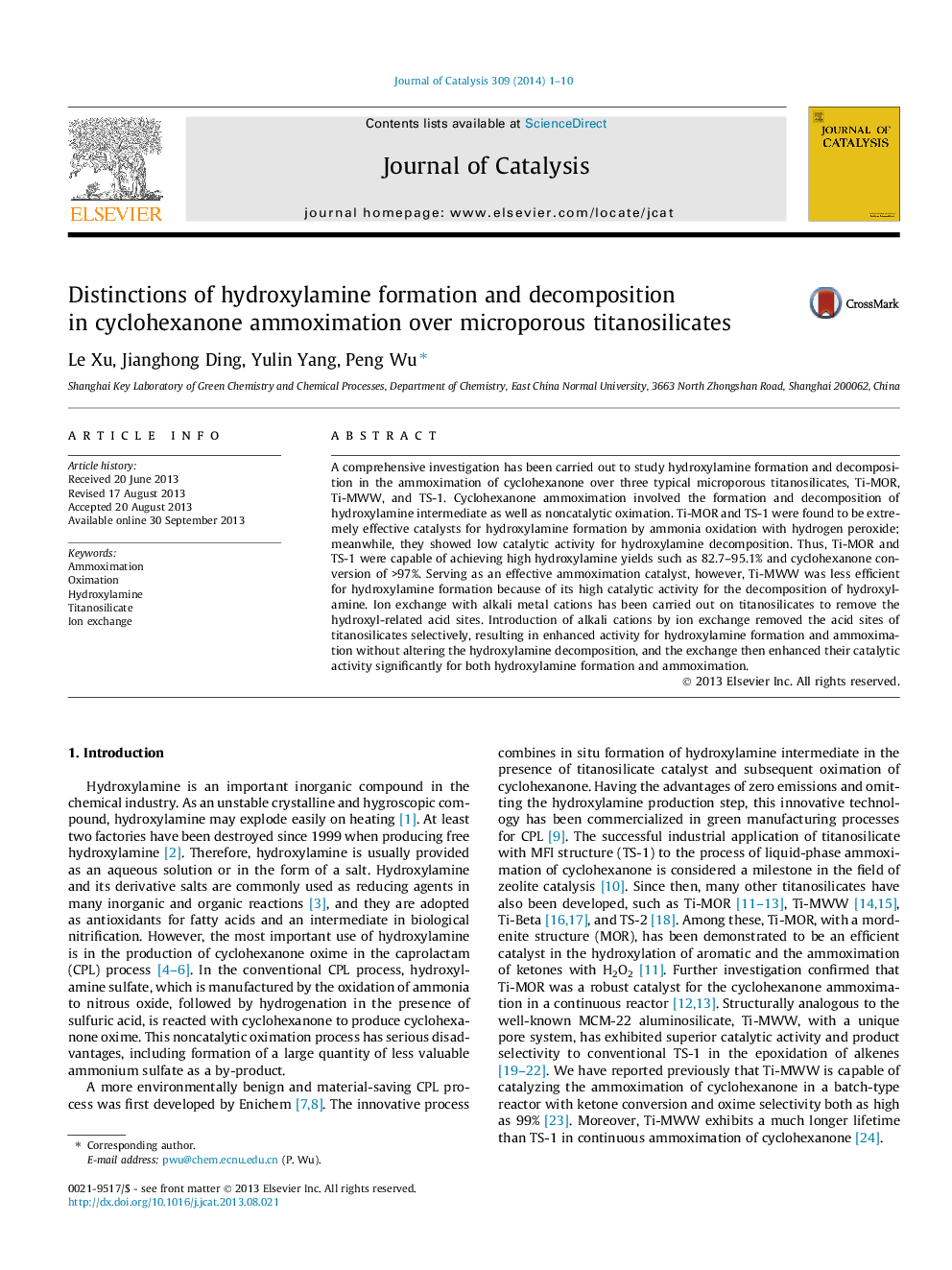| کد مقاله | کد نشریه | سال انتشار | مقاله انگلیسی | نسخه تمام متن |
|---|---|---|---|---|
| 61090 | 47565 | 2014 | 10 صفحه PDF | دانلود رایگان |

• Ammoximation of cyclohexanone has been compared between Ti-MOR, TS-1, and Ti-MWW.
• Ti-MOR, TS-1, and Ti-MWW serve as efficient catalysts for the formation of cyclohexanone oxime.
• Ti-MOR and TS-1 catalyze the oxidation of ammonia by hydrogen peroxide to hydroxylamine effectively.
• Ti-MWW exhibits a high catalytic activity for the decomposition of hydroxylamine.
• Ion exchange with neutral alkali salts improves hydroxylamine formation and thus ketone amomximation.
A comprehensive investigation has been carried out to study hydroxylamine formation and decomposition in the ammoximation of cyclohexanone over three typical microporous titanosilicates, Ti-MOR, Ti-MWW, and TS-1. Cyclohexanone ammoximation involved the formation and decomposition of hydroxylamine intermediate as well as noncatalytic oximation. Ti-MOR and TS-1 were found to be extremely effective catalysts for hydroxylamine formation by ammonia oxidation with hydrogen peroxide; meanwhile, they showed low catalytic activity for hydroxylamine decomposition. Thus, Ti-MOR and TS-1 were capable of achieving high hydroxylamine yields such as 82.7–95.1% and cyclohexanone conversion of >97%. Serving as an effective ammoximation catalyst, however, Ti-MWW was less efficient for hydroxylamine formation because of its high catalytic activity for the decomposition of hydroxylamine. Ion exchange with alkali metal cations has been carried out on titanosilicates to remove the hydroxyl-related acid sites. Introduction of alkali cations by ion exchange removed the acid sites of titanosilicates selectively, resulting in enhanced activity for hydroxylamine formation and ammoximation without altering the hydroxylamine decomposition, and the exchange then enhanced their catalytic activity significantly for both hydroxylamine formation and ammoximation.
Liquid-phase ammoximation on titanosilicates involves the formation of hydroxylamine intermediate from catalytic oxidation of ammonia by hydrogen peroxide and subsequent oximation with ketone to oxime. TS-1, Ti-MOR, and Ti-MWW differ greatly in their effects on the formation and decomposition of hydroxylamine. A controlled ion exchange with neutral alkali salts can improve the formation of hydroxylamine and thus the ammoximation of cyclohexanone to oxime.Figure optionsDownload high-quality image (90 K)Download as PowerPoint slide
Journal: Journal of Catalysis - Volume 309, January 2014, Pages 1–10